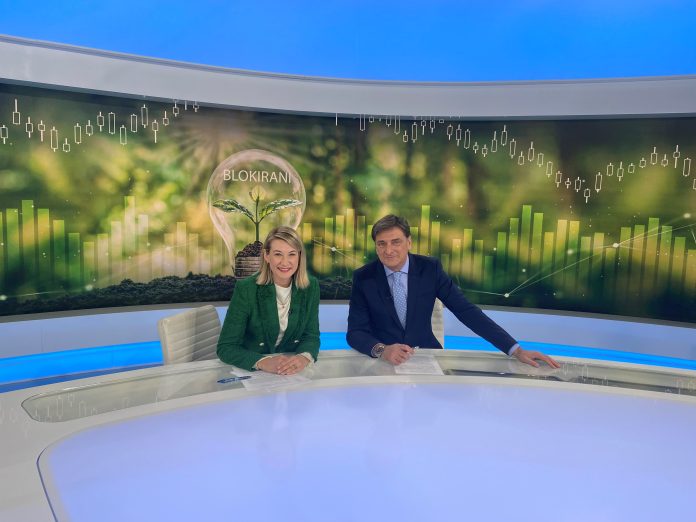Tea Dabić, a legal expert from RESC, was a guest in the “Financial Minute” segment of Studio4 on HRT, hosted by editor and presenter Željko Kardum. The topic of discussion was the blockade of RES project development.
She highlighted several stumbling blocks in the development of RES, but currently, the burning issue is the unknown price for connecting to the electric power grid. The development of new RES facilities is standing still, waiting for the unit charge for connection, which was supposed to be determined back in September 2022. Without a known connection price, set by HERA, investors cannot plan investments because connection to the grid constitutes a significant portion of the project development cost. Moreover, the unknown price affects the further issuance of permits and project development, as well as the deadlines investors have for constructing the facilities. This concerns projects of approximately 1300MW in capacity. RES currently participates in the total electricity production with approximately 20%, and with the newly installed 1300MW, they would reach a 30% share in the mix, thus moving closer to the ultimate goal, which is the energy independence of our country. Additionally, considering that 10MW of installed capacity can cover the electricity needs of about 3000 households, these 1300MW could theoretically cover the electricity needs of 390,000 households.
Croatia has abandoned the “deep” connection fee model, where investors, besides paying for the infrastructure needed for connection to the grid, i.e., their actual costs (from lines, cables, substations, and other equipment), also paid for network reconstruction costs (so-called creation of technical conditions in the network – STUM). According to the 2022 Methodology, a new connection charge model, the so-called “shallow model”, has been implemented, in which investors should be excluded from financing network enhancements since such enhancements are crucial for the entire transmission and distribution system and must be borne by the system operator. For example, the 400 kV transmission line from Split to Rijeka is an infrastructure project of national significance. It should be viewed similarly to the construction of highways because it will ensure the connection of new power plants and serve the needs of all citizens of Croatia. Therefore, through STUM, it was intended to impose on investors the financing of this transmission line, whose construction is incidentally estimated at 200 million euros. We consider this completely unacceptable because the financing of construction should be carried out with funds available from EU funds, network charges, and/or the budget of Croatia.










